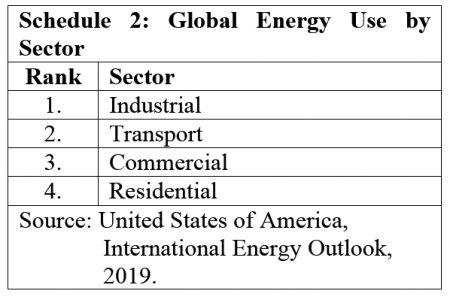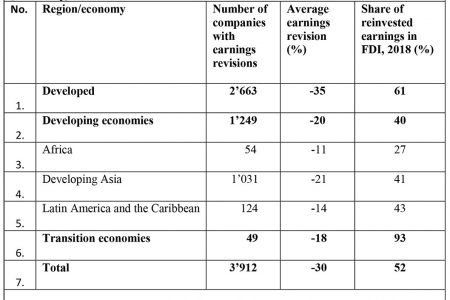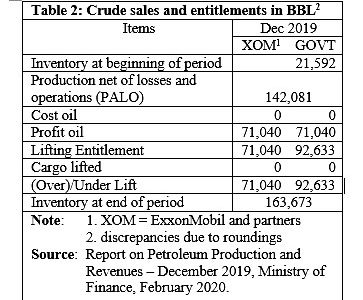Policy Choices for the Next Decade – Swing Producer!
Introduction Today’s column continues to examine the three key policy choices I identified as likely to face Guyana’s Authorities over the next decade.
Introduction Today’s column continues to examine the three key policy choices I identified as likely to face Guyana’s Authorities over the next decade.

Introduction Given my “bullish outlook” on Guyana’s potential petroleum resources, today’s column considers the profile Guyana’s petroleum exports might be assuming in the next decade.

Introduction Today’s column continues my exploration of Guyana’s world class offshore petroleum discoveries located mainly in the Stabroek Block, and under operational control of ExxonMobil and its partners.

Introduction Today’s column continues my evaluation of the “likely impacts of the 2020 global general crisis on Guyana’s infant oil and natural gas sector.”

Introduction In today’s column I continue this extended appraisal of the likely future impacts of the 2020 global general crisis (as I have described this term in previous columns) on Guyana’s infant oil and gas sector.

Introduction In last week’s column I started an evaluation of the likely future impacts of the 2020 global general crisis, as I have portrayed this in recent columns, on Guyana’s infant oil and gas sector.

Introduction Today’s column shifts the focus of my analysis of the likely impacts of the 2020 General Crisis, (as I have portrayed this) on Guyana’s infant oil and gas sector to its more speculative or forward-looking dimensions.
Introduction In today’s column I begin my consideration, in some detail, of the problematic that I had posed several weeks ago concerning the likely impacts on Guyana’s infant oil and gas sector of the unfolding 2020 global general crisis.

Introduction There is one outstanding feature of the 2020 general crisis and its impacts on the crude oil market that remains to be assessed in this series of Sunday columns, before I can fruitfully turn to evaluate its likely specific impacts on Guyana’s infant (five-month old) oil and gas sector.
Introduction Some readers query my continued use of modifiers when referring to a coming 2020 economic recession and unfolding 2020 economic depression.

Introduction Last week’s column drew attention to the fact that the United States remains comfortably the world’s pre-eminent economic powerhouse.
Introduction This column appears at the start of only the fifth month of the infant life of Guyana’s petroleum sector.

Introduction As revealed in last week’s column, thankfully the “crazy” oil price war has lasted for about one month.
Introduction My last column addressed the impact of the incipient 2020 global inflation and its accompanying economic recession on the one hand, and, on the other, the COVID-19 pandemic, on the global demand and supply for crude oil.

Introduction In today’s column I continue my deliberations about the impact of the 2020 global general crisis on Guyana’s infant oil and gas sector.

Introduction At the heart of the 2020 general crisis and its financial driver is a serious public health crisis.

Introduction Today’s column continues my evaluation of the impact of the 2020 global crisis on Guyana’s “infant petroleum sector”.

Introduction Last week’s column wrapped-up my evaluation of Guyana’s first Report on Petroleum Production and Revenues (RPPR).

Introduction Last week’s column had addressed the seeming rationale behind the publication of Guyana’s first Report on Petroleum Production and Revenues (RPPR) by the Ministry of Finance on February 19, 2020.

Introduction On February 2 of this year, I concluded my year-long series of columns, which had commenced on January 27, 2019, on the topic: Guyana’s Petroleum Road Map.
The ePaper edition, on the Web & in stores for Android, iPhone & iPad.
Included free with your web subscription. Learn more.